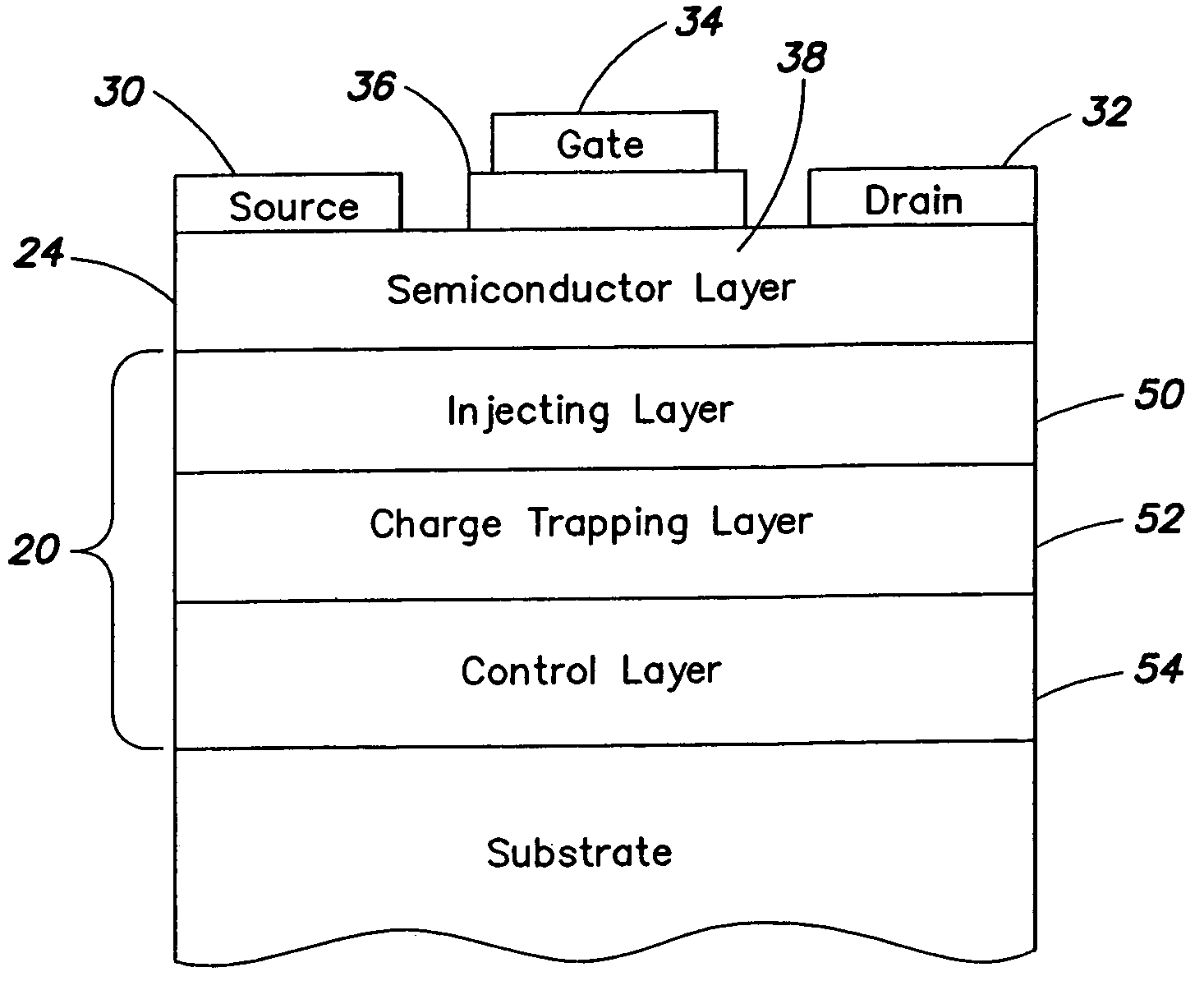Scalable nano-transistor and memory using back-side trapping
a nano-transistor and memory technology, applied in the field of electromechanical circuits, can solve the problems of ineffective scaling of conventional front-floating gate memory structures, complex processing, and often quite dissimilar structure of logic and memory devices
- Summary
- Abstract
- Description
- Claims
- Application Information
AI Technical Summary
Benefits of technology
Problems solved by technology
Method used
Image
Examples
Embodiment Construction
[0035]A schematic cross-sectional view of a semiconductor device 10 in accordance with an embodiment of the invention is shown in FIG. 1. A substrate 14 may be silicon or silicon having an oxide layer on an upper surface thereof, for example. However, substrate 14 is not limited to silicon. A charge trapping region 20 is formed on an upper surface of substrate 14. By way of example, charge trapping region 20 may be an insulating layer or a stack of insulating layers selected to perform a charge trapping function or a stack of insulating layers with nanocrystals embedded in it. The structure and operation of charge trapping region 20 are described in detail below. A semiconductor layer 24 is formed on an upper surface of charge trapping region 20. A source 30, a drain 32 and a gate 34 may be formed in semiconductor layer 34 to define a transistor. As is known in the art, gate 34 is spaced from semiconductor layer 24 by a gate oxide 36, and a channel 38 is defined in semiconductor lay...
PUM
 Login to View More
Login to View More Abstract
Description
Claims
Application Information
 Login to View More
Login to View More - R&D
- Intellectual Property
- Life Sciences
- Materials
- Tech Scout
- Unparalleled Data Quality
- Higher Quality Content
- 60% Fewer Hallucinations
Browse by: Latest US Patents, China's latest patents, Technical Efficacy Thesaurus, Application Domain, Technology Topic, Popular Technical Reports.
© 2025 PatSnap. All rights reserved.Legal|Privacy policy|Modern Slavery Act Transparency Statement|Sitemap|About US| Contact US: help@patsnap.com



